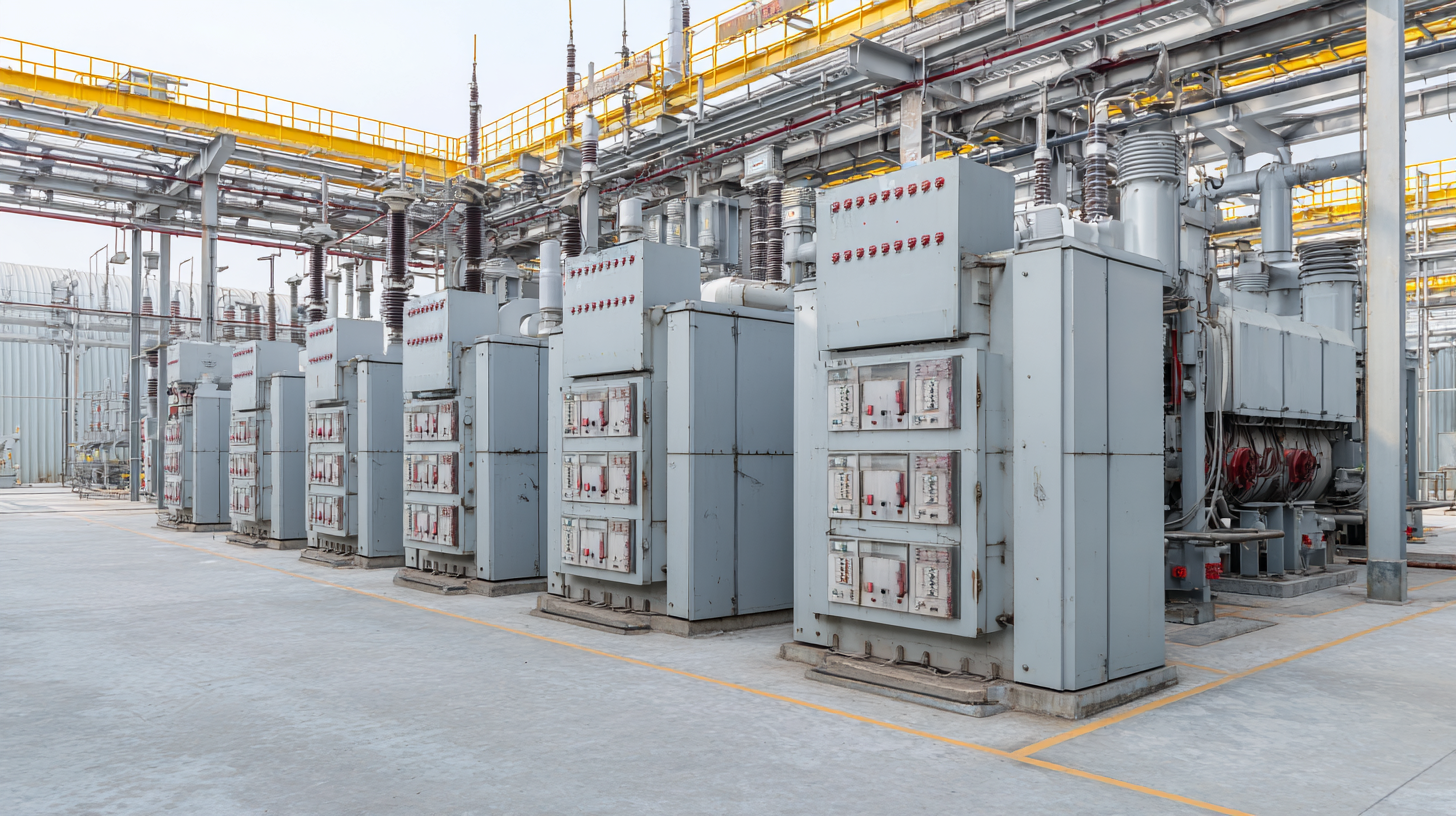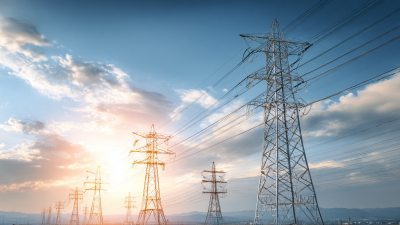In today's fast-paced digital landscape, understanding power supply systems is paramount for ensuring energy reliability and efficiency. According to the U.S. Department of Energy, approximately 30% of all electrical energy produced is lost in distribution and conversion processes, highlighting the critical need for optimized power supply systems. Furthermore, the International Energy Agency reports that enhancing the efficiency of power supply systems can potentially reduce global power consumption by 10-15%, translating to significant cost savings and reduced emissions.
 As industries increasingly rely on uninterrupted power sources, grasping the intricacies of these systems—from the generation of electricity to the delivery mechanisms—becomes essential for sustaining operational performance and achieving sustainability goals. This guide aims to delve into the vital components, technologies, and best practices related to power supply systems, equipping readers with the knowledge needed to enhance energy reliability and drive efficiency within their organizations.
As industries increasingly rely on uninterrupted power sources, grasping the intricacies of these systems—from the generation of electricity to the delivery mechanisms—becomes essential for sustaining operational performance and achieving sustainability goals. This guide aims to delve into the vital components, technologies, and best practices related to power supply systems, equipping readers with the knowledge needed to enhance energy reliability and drive efficiency within their organizations.
Understanding power supply systems is crucial for ensuring energy reliability and efficiency. These systems are the backbone of every infrastructure, facilitating the seamless flow of electricity to homes, businesses, and industries. The key principles of power supply systems focus on maintaining a consistent and uninterrupted power flow, which is essential for operational stability and the minimization of downtime.
To enhance energy reliability, it is important to implement regular maintenance and monitoring of power supply systems. One tip is to invest in advanced predictive maintenance technologies that utilize data analytics to forecast potential failures before they occur. Additionally, diversifying energy sources can significantly improve reliability; integrating renewable energy with traditional supply methods ensures that energy is not solely dependent on one source.
Efficiency is equally critical in power supply systems. By adopting energy-efficient practices, businesses can reduce waste and lower operational costs. A simple tip is to conduct energy audits regularly, which can identify areas where energy consumption can be reduced. Implementing smart grid technologies can also optimize energy distribution, making the entire power supply network more efficient and reliable.
This chart illustrates the energy efficiency and reliability metrics of different power supply systems based on real-world data. The data shows the percentage of uptime and energy efficiency of various types of systems.
Assessing energy efficiency in power supply systems is crucial for enhancing both reliability and sustainability. A range of tools and techniques exists to identify inefficiencies within energy systems, starting from in-depth audits to the implementation of advanced monitoring technologies. Energy audits often reveal areas where energy consumption is disproportionately high, allowing organizations to focus their improvement efforts strategically. By leveraging data analytics, businesses can gain insights into usage patterns and identify the most impactful change opportunities.
In addition to audits, the application of real-time monitoring systems is instrumental for ongoing assessment. These systems provide continuous feedback on energy consumption, enabling immediate corrective measures when anomalies are detected. Techniques such as refined demand response strategies and smarter grid technologies enhance the efficiency of power supply systems, balancing demand and supply while minimizing losses. Together, these tools empower organizations to cultivate a culture of energy efficiency, leading to substantial cost savings and reduced environmental impact.
| Dimension | Description | Tools/Techniques | Efficiency Improvement (%) |
|---|---|---|---|
| Power Factor Correction | Improving the ratio of real power to apparent power in a system. | Capacitor banks, synchronous condensers | 5-15% |
| Heat Loss Reduction | Minimizing energy lost as heat in electrical systems. | Insulation, cooling systems | 10-25% |
| Load Management | Managing electrical demand to improve supply efficiency. | Demand response programs, energy storage | 15-30% |
| Renewable Integration | Integrating renewable energy sources into the energy supply system. | Solar panels, wind turbines | 20-50% |
| Regular Maintenance | Scheduled upkeep to ensure operational efficiency. | Inspections, component replacements | 5-10% |
The integration of renewable energy sources into power supply systems has emerged as a pivotal strategy for enhancing energy reliability and efficiency. By harnessing resources such as solar, wind, and hydropower, utility providers can diversify their energy portfolios and reduce dependency on fossil fuels. This shift not only mitigates the environmental impact associated with conventional energy generation but also promotes grid stability, as renewable sources can be strategically deployed to match demand fluctuations throughout the day.
To effectively incorporate these sustainable resources, power supply systems must evolve through advanced technologies and innovative management practices. Smart grid solutions can facilitate real-time monitoring and optimization of energy distribution, allowing for a seamless blend of renewables with traditional generation methods. Moreover, energy storage systems, such as batteries, play a critical role by capturing excess power generated during peak production times and releasing it during demand surges. This dynamic integration ensures that energy remains available and reliable, ultimately leading to a more resilient and efficient power infrastructure.

Ensuring power supply continuity is critical in today's technology-driven environment where downtime can lead to significant financial losses. According to a report by the Electric Power Research Institute, outages can cost businesses an average of $8,000 per minute. Thus, implementing strategies to mitigate risks in power supply systems is paramount for maintaining operational efficiency and reliability.

One effective strategy is the integration of advanced energy management systems (EMS). These systems provide real-time monitoring and analytics, allowing companies to predict and respond to potential disruptions proactively. The U.S. Department of Energy has estimated that efficient EMS can lead to up to a 30% reduction in energy costs and enhance reliability. Furthermore, investing in backup power solutions, such as uninterruptible power supplies (UPS) and generators, offers additional layers of safety, ensuring that critical operations remain unaffected during outages.
Regular risk assessments are also crucial for identifying vulnerabilities within the power supply framework. The International Energy Agency reports that utilities that conduct annual assessments mitigate 50% more risks compared to those that do not. By prioritizing these strategies, organizations can cultivate a resilient energy ecosystem that not only enhances reliability but also drives overall business success.
Evaluating energy reliability and efficiency is essential in today's power supply systems, particularly with the increasing integration of Renewable Energy Sources (RESs) into modern grids. A recent study highlights the significance of optimizing the reliability efficiency index, which is vital for enhancing both profitability and sustainability. For instance, transitioning to smart grids that utilize real-time data can improve efficiency metrics by as much as 30% compared to traditional systems. The incorporation of artificial intelligence in energy management also aids in predictive maintenance, thereby ensuring reliability in energy supply.
Furthermore, the assessment of solar energy systems has become increasingly sophisticated, with frameworks developed to quantify operational reliability under various uncertainties. A recent report by the IEEE RTS 96 network indicates that innovative approaches can reduce downtime and enhance performance by approximately 15%. With the rise of hybrid renewable energy systems, a comprehensive evaluation of metrics not only aids in monitoring reliability but also supports better decision-making for future investments in sustainable infrastructure. The focus on advanced optimization techniques further allows for efficient resource allocation, ensuring that energy demands are met without compromising system integrity.





